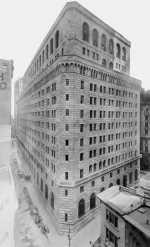1907
US bank run followed by the creation of the Fed
The trigger event of the bank run of 1907 was the decision by the Knickerbocker Trust Company, a company specialised in long-term wealth management for individuals and companies, to refuse to honour its debts. This led to numerous withdrawals of money from banks and a fall in the US stock market of nearly 50% in one year. The ensuing domino effect was impossible to stop because all the smaller banks in New York had deposited their surplus reserves with other banks, and the panic spread across the entire United States. A rescue plan, made possible by an injection of private funds by the banker J.P. Morgan, re-established confidence in the financial system. The vulnerability of the American banking system revealed the need to centralise money supply and bank regulation with a lender of last resort. This paved the way for the 1913 « Owen-Glass Federal Reserve Act » creating the Federal Reserve Bank, otherwise known as the « Fed ».
For more information on 100 years of history of the Fed: see this data visualization

